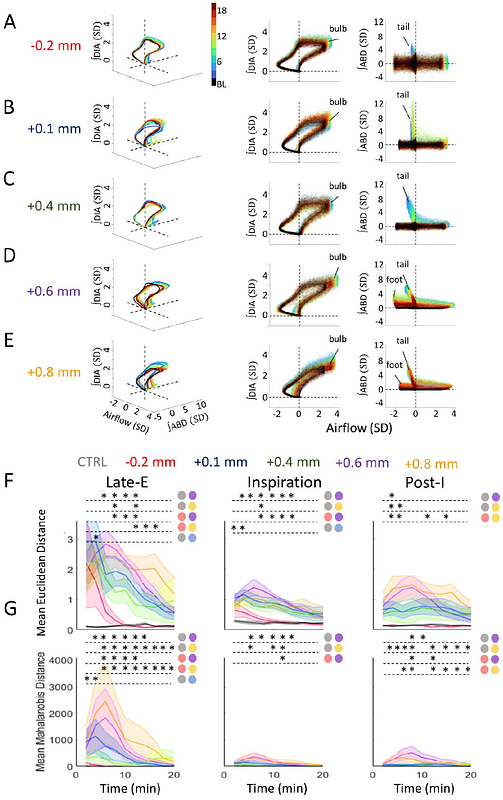Mapping responses to focal injections of bicuculline in the lateral parafacial region identifies core regions for maximal generation of active expiration

Mapping responses to focal injections of bicuculline in the lateral parafacial region identifies core regions for maximal generation of active expiration
Abad, A.; Prostebby, M.; Dickson, C. T.; Pagliardini, S.
AbstractThe lateral parafacial area (pFL) is vital for respiratory control, particularly in generating active expiration through an expiratory oscillatory network. Active expiration involves rhythmic abdominal (ABD) muscle contractions during late-expiration, increasing ventilation during elevated respiratory demands. The precise anatomical location of the expiratory oscillator within ventral medullas rostro-caudal axis, is debated. While some studies point to the caudal tip of the facial nucleus (VIIc) as the oscillator\'s core, others find similar responses in more rostral areas. Our study, employed bicuculline (GABA-A receptor antagonist) injections at various pFL sites (-0.2 to +0.8mm from VIIc) to investigate the impact of GABAergic disinhibition. These injections consistently elicited ABD recruitment, but the response strength varied along the rostro-caudal zone. Remarkably, the most robust and enduring changes in tidal volume, minute ventilation and combined respiratory responses occurred at more rostral pFL locations (+0.6/+0.8 mm from VIIc). Additionally, a multivariate analysis of the respiratory cycle further differentiated between locations, revealing the core site for active expiration generation. Our study advances our understanding of neural mechanisms governing active expiration and emphasizes the significance of investigating rostral pFL regions.